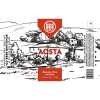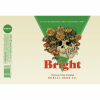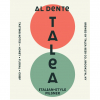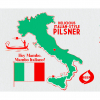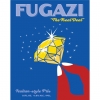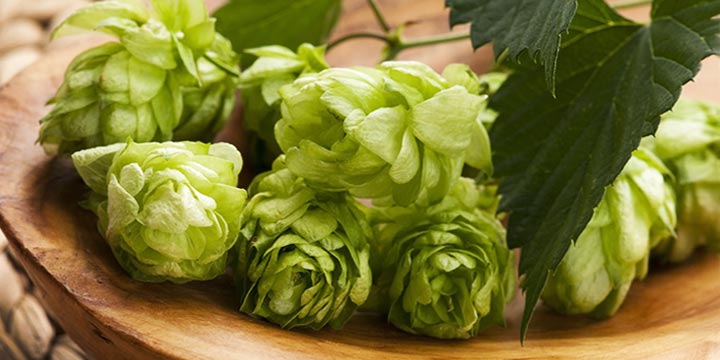The 13 Best Italian Pilsners of 2022

The humble pilsner can seem simple, but beneath those golden ripples and frothy head is a beer that can be cunningly complex. Ask around and brewers will tell you the pilsner is one of the trickier beer styles to brew.
Born in the town of Pilsen in what is now the Czech Republic, the pilsner has traveled around the world, with many different cultures putting their own stamp on the style. German pilsners are known for being lighter. American pilsners ride the middle with malt and focus more heavily on the hops. And back in February we wrote about the 17 highest-rated German, Czech, and American pilsners.
But there's a lesser-known style of pilsner that over the past couple of years has been making waves in America.
The Italian pilsner has become known for its light body and the addition of a dry-hopping process that imparts subtle European hop character. But what is an Italian pilsner, exactly?
Technically, the style was an accident. But as it turns out, it was a very happy accident.
A Short History of the Italian Pilsner

In 1996, Agostino Arioli—founder of a brewery in Como, Italy, called Birrificio Italiano—set out to make a northern German pilsner. Fond of the style at the time, Arioli strove to brew something similar to a Jever Pils from Saxony's Friesisches Brauhaus zu Jever. However, the final result was something new.
Failing to brew what he considered a real pils, Arioli veered in a different direction. Naming the beer Tipopils, or "kind of pils" in Italian, Arioli used a technique from his brewing brethren to the north: England. By putting Tipopils through an English cask dry-hopping process, Arioil added small amounts of hop cones to the beer, imparting Old World hop flavor into an unfiltered pilsner.
Voila: The Italian pilsner was born.
How Did the Italian Pilsner Travel to America?

In America, we trace the rise of the Italian pilsner to Matt Brynildson, brewmaster at Firestone Walker. As the story goes, while overseas at the European Beer Star (EBS) competition, he tried Tipopils for the first time.
"Here was this super passionate dude standing by his beer, just proud as could be and open to talking about how he made his beer," says Brynildson in an article for Hop Culture. "I met him and fell in love with his beer, his enthusiasm, and his passion. In typical Italian style, everything had an exclamation point at the end. We were instantly best friends."
After tasting Arioli's beer, Brynildson returned home and wrote the recipe for Pivo Pils.
"I would say Ago's beer is as influential—if not more so—than any of the German pilsners I had," says Brynildson. "Ago is the king who started it all."
And what did Ago do that made Italian pilsners so different? One word (or is it two): Dry hopping.
What Makes an Italian Pilsner Different?

Dry hopping is really the big differentiator in Italian pilsners, with noble hops imparting a characteristic aroma and bitterness. Traditionally, Arioli used hops such as Tettnang Tettnanger in Tipopils, while others implemented Spalter Select or Hallertau Mittelfrüh.
Ranging between four and five-and-a-half percent, Italian pilsners are light in color, clean in body, unfiltered, and defined by dry hopping.
For purveyors of the style, European hops are encouraged. The New-World American hops that are popular in IPAs—Simcoe, Cascade, Chinook, Galaxy, and others—are too aggressive in Italian pilsners, imparting flavors that are a bit too fruity for this delicate beer.
"It's a German-style pilsner with a little bit of dry hop that focuses exclusively on noble hop varieties," says Mike Schnebeck, director of innovation at Fort Point Beer Co. in an article for Hop Culture. The San Francisco-based brewery makes their own version of an Italian pilsner called Sfizio. "The hop flavor component is a key distinction in the style versus just a hopped pilsner. Just adding that little extra pop of that grassy, herbal aroma."
For Brynildson, a perfect Italian Pilsner is about that restraint and balance.
"When I crack a can of [Italian] pilsner and smell, then I can tell right away, Oh yeah, they got it… they got the right hop to yeast balance," he says. "A fresh pilsner always has a touch of sulfur, but more like a burnt match [aroma] that tells you it's fresh and well made."
The key to an Italian pilsner is toeing the line between two styles: presenting pungent aromas with a slight bitterness like an IPA, but drinking more refreshing and crisp like a lager.
An Italian pilsner marries the old-world—noble hops—with the new—dry hopping. And that in itself should make you want to try one.
All in all, the Italian pilsner is a fairly new style in beer years worth taking a good long sip. And we've seen incredible breweries across the country try their hand at this hoppy old-world pilsner.
Untappd's 13 Highest-Rated Italian Pilsners of 2022

2. Terrifica Italian-Style Horror Pils - Wayfinder Beer

Terrifica Italian-Style Horror Pils
Collaboration with Heater Allen Brewing, Modern Times Beer
Pilsner - Italian
4.7% ABV
N/A IBU
3,052 Ratings
5. Double Saaz - Hop Butcher for the World

7. Luppolo - Oxbow Brewing Company
8. Riding For the Feeling - Resident Culture Brewing Co.
9. Hey Mambo, Mambo Italiano! - Mikerphone Brewing
10. Idle Hands - Annex Ale Project
11. FUGAZI - BlackStack Brewing
12. Cuttin Grass - Duration Brewing
13. Westbound Italian Pils - Westbound & Down
Powered by Untappd Data (minimum of 1,000 check-ins)
